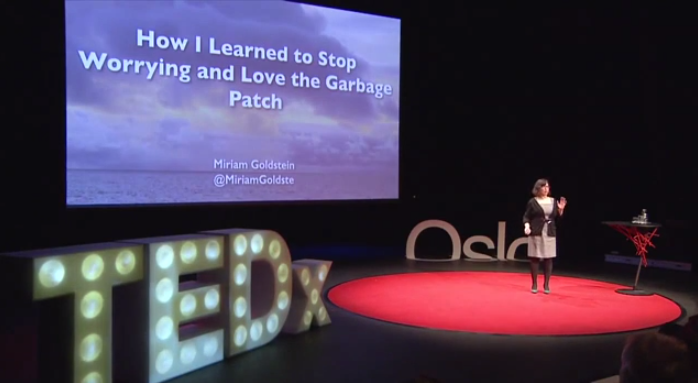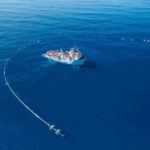Deepling emeritus, Miriam Goldstein, is a science rock star. My science crush on her only deepens after watching her completely explode TeX Oslo. Miriam is all like BAM SCIENCE! In case you don’t know, Miriam is a marine biologist and science communicator currently spending a year as a Sea Grant Fellow in the United States Congress. She was one of the original DSN crew and holds a Ph.D. from the Harvard of Oceanography, Scripps Institution of Oceanography in San Diego California. She is a leading expert on the ecological impacts of plastic debris in the North Pacific Subtropical Gyre.








It had the feel of over confidence, to the point of hysteria. Is her sampling area even representative. She says, essentially, “I went out there in an expensive boat and spent a few days looking for a garbage patch that I didn’t find.” Her conclusion? It’s not really there.
That sounds all well and good, but note http://www.algalita.org/documents/FAQs.pdf and particular the scale of the survey area and the paucity of actual sample information.
The sample areas are far too minute for any serious scientist to regard them as representative, and I would bet my bottom dollar that the sample information from the 70s and 80s doesn’t have any better pedigree than Myriam’s jaunt out on her expensive boat using a cubic metre net and doing a surface grab and taking some photos, and coming back to tell Olso, “don’t worry, I’ve seen it, the problem is way overstated”.
Please see my 2012 paper on the extent of the garbage patch, which includes Algalita’s data (and actually ALL available data on the subject). If you want more, you can also read my rather extensive 2013 paper on how much plastic there is and how to measure it.
And check yourself before calling a female scientist giving a professional talk about her own research “overconfiden[t] to the point of hysteria” and implying that I’m not a “serious scientist.” I’m happy to discuss the science with you, but crass sexism will get you banned.
Dear Ms. Goldstein, thank you for this interesting talk. I was wondering: do you have any figures regarding how much time is needed for these plastic particles to completely disintegrate? Could digestive enzymes from these animals speed up the process?
Aside from this, I found interesting information regarding pollution of the Mediterranean by plastic microparticles on http://www.expeditionmed.eu/ and especially pollution of sea food, such as mussels, on http://www.expeditionmed.eu/fr/fr/2013/05/des-particules-de-plastiques-qui-donnenet-la-chair-de-moule-10mn/ (in French).
Thanks in advance for your comments and suggestions!